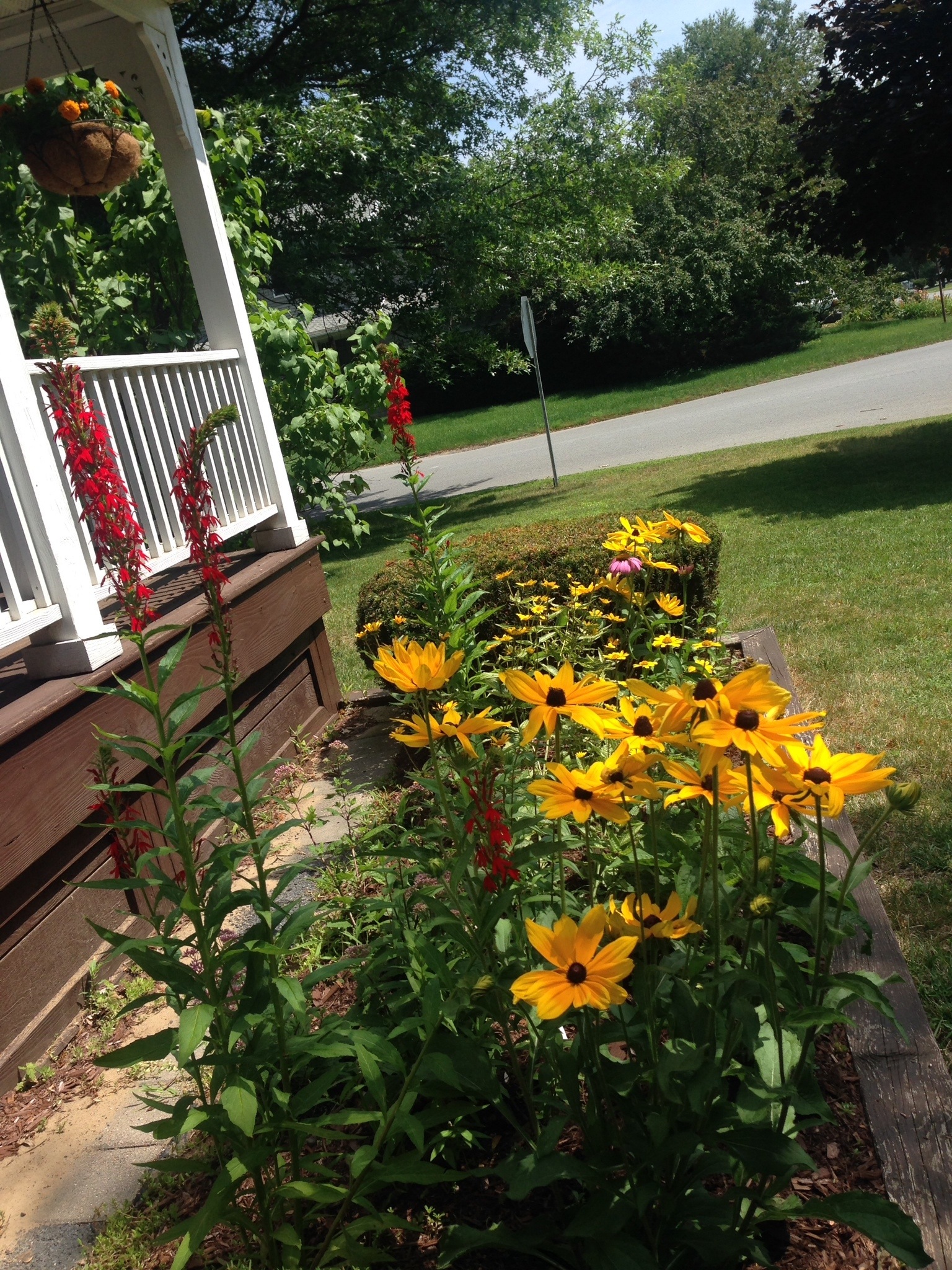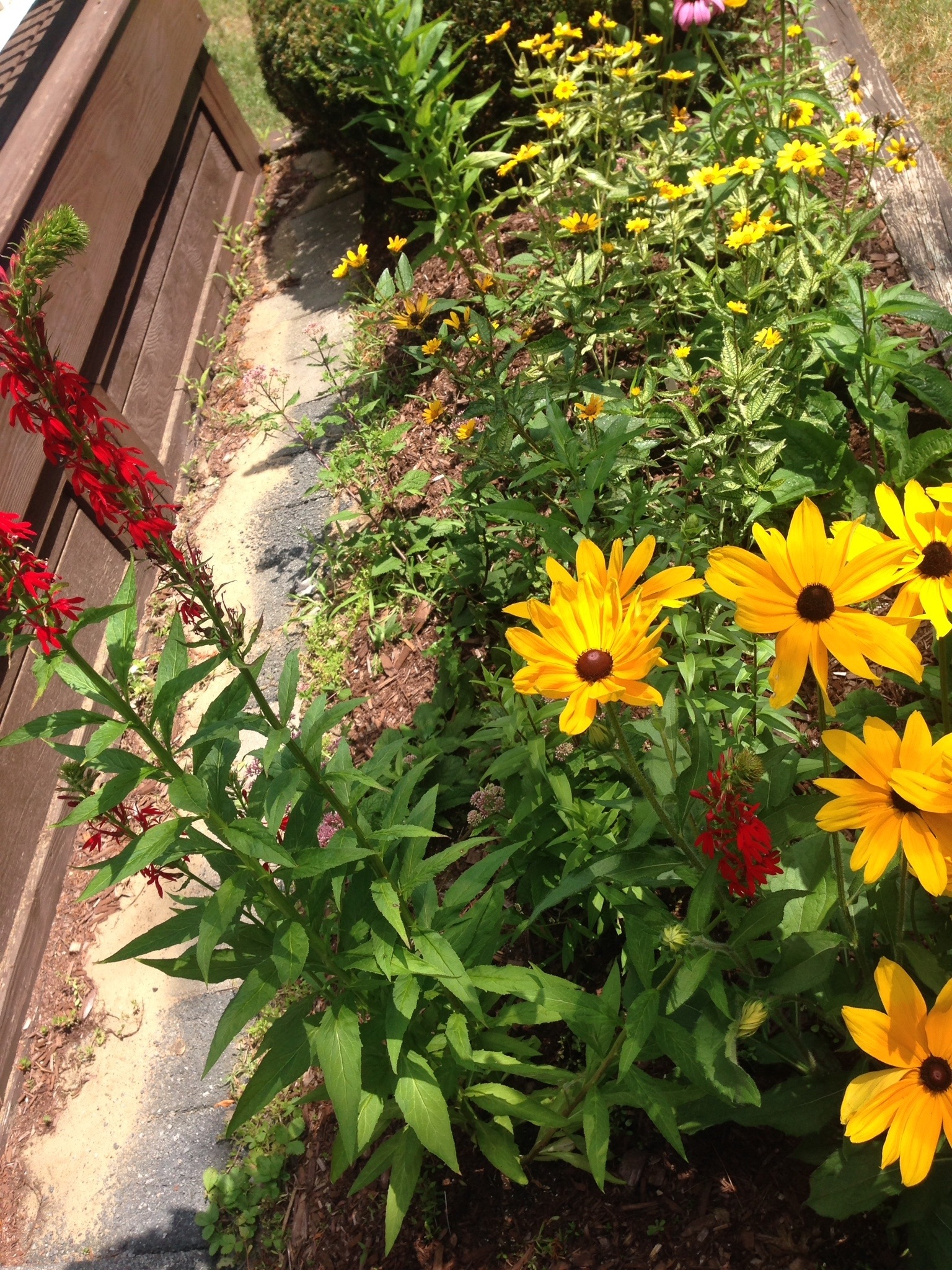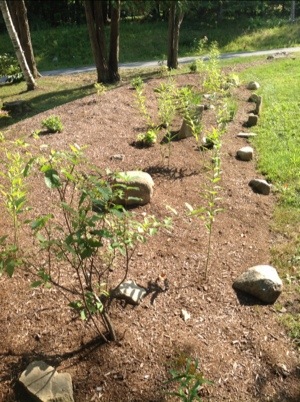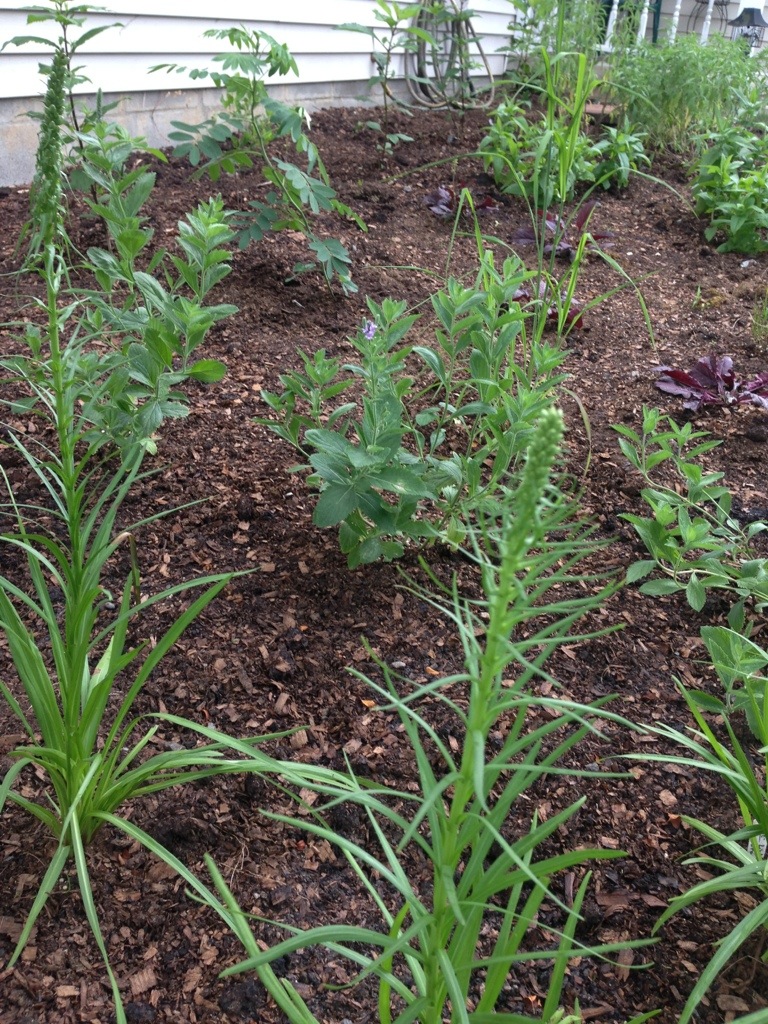
Recently we published an article about the link between using Japanese Barberry shrubs in landscaping and an increase in human Lyme disease infection rates in the surrounding neighborhoods. People in Saratoga Springs, Albany and Schenectady, NY are learning about this. We humans are collaborating against ourselves in a public health crisis through lazy and shortsighted landscaping practices.
In turn, we’re hearing from more and more people who are enthusiastically interested in replacing the Barberry in their landscaping with native plants. We all share the ecosystem we co-create. Some folks want to replace their Barberry with native shrubs like Viburnum, Red or Black Chokeberry, Ninebark or Elderberry. A tasteful native wildflower design as shown in this photo is another alternative. This mix of Cardinal Lobelia, Ox-Eye Sunflower, Coneflower, Little Joe Pye Weed, Phlox maculata and Rudbeckia hirta is a huge improvement. Both the garden and the ecosystem are in a better position from the previous existing noxious, invasive Japanese Barberry.
 Removing Barberry and other invasive plants, replacing with natives is an investment in our community. It strengthens our ecosystem by offering food to our butterflies, pollinators and songbirds. Additionally, the beautification value cannot be understated. These homeowners can have cut wildflowers for bouquets all season long now if they wish now. That’s aesthetically a huge step up from looking at the tired Barberry all the time. We love when folks inquire for help replacing Japanese Barberry with native wildflowers and shrubs. The whole entire ecosystem rejoices. It’s one of the best types of projects there is.
Removing Barberry and other invasive plants, replacing with natives is an investment in our community. It strengthens our ecosystem by offering food to our butterflies, pollinators and songbirds. Additionally, the beautification value cannot be understated. These homeowners can have cut wildflowers for bouquets all season long now if they wish now. That’s aesthetically a huge step up from looking at the tired Barberry all the time. We love when folks inquire for help replacing Japanese Barberry with native wildflowers and shrubs. The whole entire ecosystem rejoices. It’s one of the best types of projects there is.



